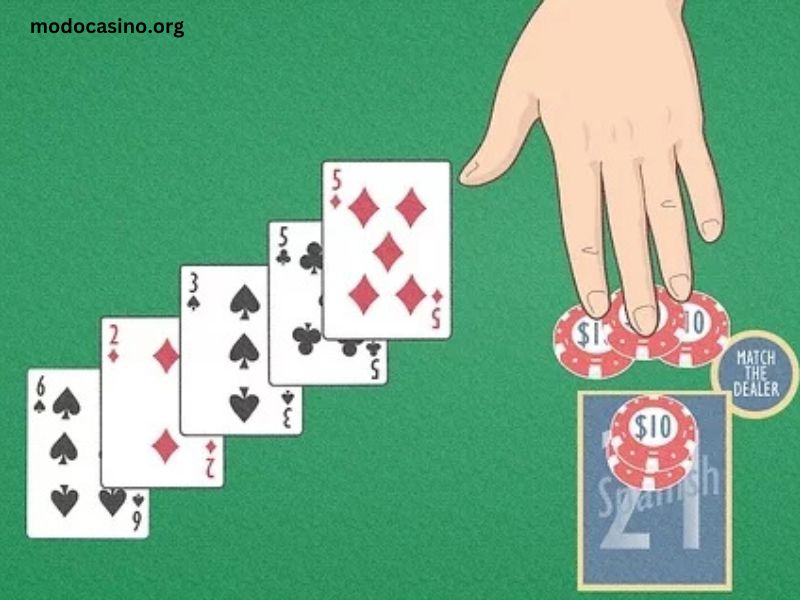When it comes to casino card games, few are as popular as Blackjack. Its blend of strategy, chance, and social interaction has captivated players for generations. However, in recent years, another variant has gained popularity: Spanish 21. While both games share the same basic premise, they have distinct differences that can influence gameplay and strategy. This article will explore the similarities and differences between Spanish 21 and Blackjack, helping players understand the nuances of each game and decide which might be the better fit for their gaming style.
The Basics of Blackjack
Blackjack, also known as 21, is a card game played between one or more players and a dealer. The objective is to beat the dealer by having a hand value that is closer to 21 without going over. The game uses a standard 52-card deck, and the values of the cards are as follows:
- Number cards (2-10) are worth their face value.
- Face cards (Jacks, Queens, Kings) are worth 10.
- Aces can be worth 1 or 11, depending on which value benefits the player’s hand.
Game Mechanics
- Initial Deal: Each player is dealt two cards, and the dealer receives one face-up card and one face-down card (the “hole card”).
- Player Decisions: Players can choose to “hit” (take another card), “stand” (keep their current hand), “double down” (double their bet and take one more card), or “split” (if they have two cards of the same value, they can split them into two hands).
- Dealer’s Turn: After all players have completed their turns, the dealer reveals their hole card and must hit until they reach a minimum hand value of 17.
- Winning: Players win if their hand is closer to 21 than the dealer’s without exceeding 21. Players can also win by the dealer busting (going over 21).
The Basics of Spanish 21
Spanish 21 is a variation of Blackjack that introduces several unique features and rule changes. The game is played with a Spanish deck, which consists of 48 cards by removing all the 10s from a standard 52-card deck. As a result, the total number of cards in play is reduced, leading to different odds and strategies.
Game Mechanics
The basic mechanics of Spanish 21 are similar to Blackjack, but with key differences:
- Card Values: The values of the cards remain the same, with Aces still being worth 1 or 11, and face cards worth 10.
- Initial Deal: Players receive two cards, and the dealer has one face-up and one face-down card.
- Player Options: Players can hit, stand, double down, or split as in traditional Blackjack. However, Spanish 21 offers additional options:
- Players can double down on any number of cards.
- Players can surrender their hand and reclaim half their bet before the dealer checks for Blackjack.
- Bonus Payouts: Spanish 21 includes several attractive bonus payouts, such as 3:2 for a 21 made with five or more cards and various special payouts for specific combinations.
- Dealer Rules: The dealer stands on all 17s, including a soft 17 (a hand containing an Ace valued as 11).
Key Differences Between Spanish 21 and Blackjack
1. Deck Composition
One of the most significant differences is the type of deck used. Spanish 21 is played with a Spanish deck of 48 cards, missing the 10s. This changes the composition of the deck and can affect the probabilities of hitting specific card combinations.
2. Rule Variations
Spanish 21 offers several rule variations that differ from traditional Blackjack:
- Player-Friendly Rules: Players can double down on any number of cards and have more opportunities to win bonus payouts.
- Surrender Option: The ability to surrender before the dealer checks for Blackjack adds a layer of strategy that is less common in traditional Blackjack games.
- Bonus Payouts: Spanish 21 typically offers higher payouts for achieving 21 with multiple cards, making it more rewarding for strategic play.
3. Strategy and Odds
The strategic approach to both games varies significantly due to the differences in deck composition and rules:
- Basic Strategy: While the basic strategy for Blackjack is well-documented, Spanish 21 requires adjustments due to the missing 10s and the added options available to players. Players need to familiarize themselves with a different strategy chart to optimize their gameplay in Spanish 21.
- House Edge: The house edge in Spanish 21 can be more favorable to players than in Blackjack due to the enhanced player options and bonus payouts. However, the specific house edge can vary by casino and game rules.
4. Game Pace and Flow
The flow of the game can also differ:
- Blackjack: The pace of a Blackjack game is often quicker, with players making decisions based on a standard set of rules and strategies.
- Spanish 21: The inclusion of additional options and payouts in Spanish 21 can slow down the game, as players may take more time to consider their choices, especially when doubling down or evaluating the potential for bonus payouts.
Choosing Between Spanish 21 and Blackjack
When deciding between Spanish 21 and Blackjack, players should consider several factors:
1. Personal Preference
Some players may prefer the traditional aspect of Blackjack and its straightforward rules, while others might enjoy the complexity and enhanced opportunities for wins in Spanish 21. Trying both games can help players determine which they enjoy more.
2. Strategy Level
For those who enjoy strategic gameplay and are willing to learn new strategies, Spanish 21 may offer a more engaging experience. Conversely, players who prefer a simpler game might gravitate towards Blackjack.
3. Availability and Variants
Not all casinos offer Spanish 21, so availability may influence a player’s decision. Additionally, both games have various local rules and variants, which can affect the experience.
4. Payout Structures
The potential for higher payouts in Spanish 21 may attract players looking for bigger wins. However, players should always consider the house edge and overall odds before choosing a game.
Conclusion
Spanish 21 and Blackjack are both exciting card games that offer unique experiences. While they share a common foundation, the differences in rules, strategy, and gameplay dynamics create two distinct games. Players should evaluate their preferences, desired level of strategy, and risk tolerance when choosing between the two. Ultimately, both games can provide hours of entertainment and the thrill of potentially winning big at the casino. Whether you choose the classic allure of Blackjack or the innovative twists of Spanish 21, both games have something to offer for every card enthusiast.




